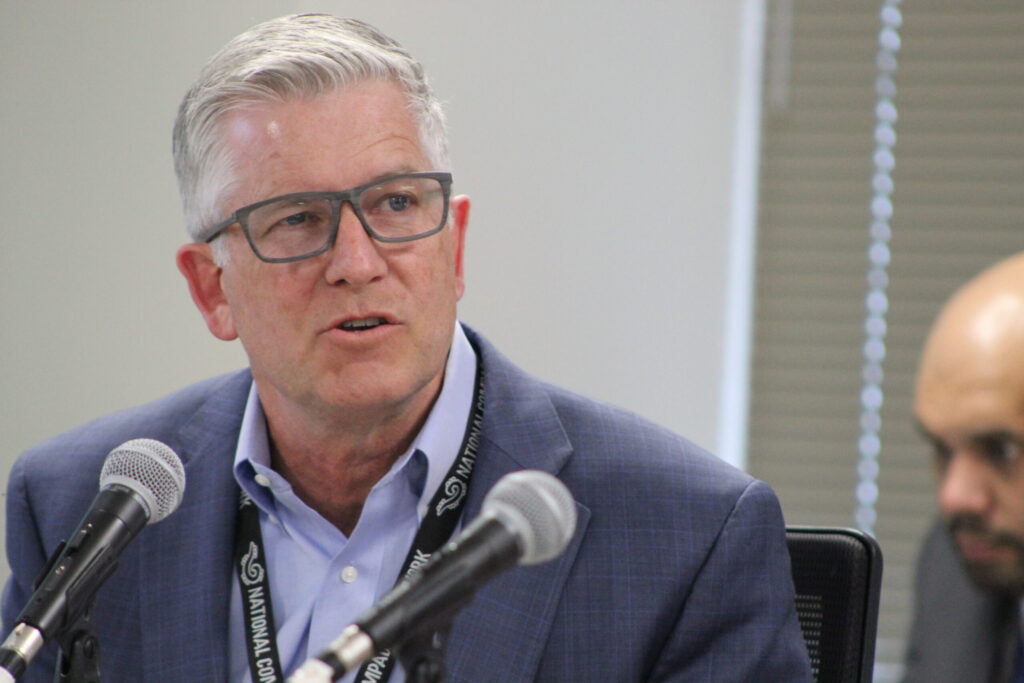Don’t mistake emotion for truth, agriculture for evil | GABEL


A wise man once told me so long as someone in a family, who is still living, had hoed a row of tomatoes, your family was connected enough to the past to be successful in the future. His grandfather made his way to the West, loaded for bear with quilts stitched by Christian women and tools with handles worn smooth by rough hands. They settled in Fort Lupton in an area rich with produce farms later anchored by the canning plant that kept produce farmers employed during the cold months on the farm. He planted 10 acres of tomatoes by hand, and it was by hand he weeded, watered, picked and packed those tomatoes every day. Each morning, he took his wooden crates of tomatoes to market, and returned home to weed and water, pick and pack. When fall was ushered in and frost turned his tomato vines black, he took his tomato income to the bank and paid for the family farm.
His generation didn’t do the hard work for their own benefit or even for the benefit of their children. His generation did it for his grandchildren and great grandchildren to claim that legacy. That wise man’s father, Philip, died early this year in the same farmhouse where he was born in 1934. His funeral procession drove slowly past the farm where old tractors had been parked in perfect rows by his grandson and great grandsons who now farm that same land and don’t forget for a minute the sacrifices made in the rows of tomatoes for generations they would never know.
Stay up to speed: Sign up for daily opinion in your inbox Monday-Friday
Another wise man, who is of the generation that pretended to read or sleep while their fathers sat at the kitchen table surrounded by papers trying to make the books show a break even. The 1980s changed men and changed families in and around agriculture. The men who sat at those tables would never have dreamed of people trying to attack agriculture with their bellies full and backsides clothed. They wouldn’t have dreamed of $5 diesel, million-dollar equipment, intentionally introducing predators to the landscape, or crops drilled with satellite-guided precision. That generation kept a straight row because it was the right way to ensure a harvest. After weathering the 1980s, they were justifiably suspicious of the eager banker and the government, for they had heard President Ronald Reagan’s nine most frightening words in the English language and they knew it to be true.
There are as many stories about the hard and the hardscrabble that family agriculture operations are built upon as there are family farms and ranches. Part of the power in these stories is in the remembering and the retelling. Not in a “we walked to school without shoes in the snow, uphill both ways” telling, but in a way that connects generations to the foundation they stand on.
When Kenny Monfort was king, the end of the era in which every farmer fed a few fat cattle was coming to an end and that farmer was becoming more specialized. To replace the thousands of farmer feeders, large feedyard operations, like Monfort’s, were establishing near the supply of feeder cattle, corn and corn silage, and meat processors. The scale that allowed Monfort to be efficient and successful wasn’t the enemy. And the scale that allows JBS or Cargill to be efficient isn’t the enemy today. Monfort was always looking forward, but he never failed to remember the days before when fat cattle arrived by rail, were purchased at the Denver Union Stock Yards Company and walked across a bridge into a processing facility.
There was a time when agriculture producers faced unpredictable weather before they were blamed for that weather’s changes. It was a time when ag producers faced unstable commodity prices before the middlemen were multinational conglomerates with power, influence and the periodic criminal record. It was a time when ag producers faced the challenges of calving season without the added stress of relocated apex predators and the threat of being accused of not doing enough to prevent depredations even after spending nights in a pickup cab watching cows and trudging through deep snow to adjust fladry. There was a time when ag producers faced the challenge of consumers being generations removed from the farm and ranch before small groups took it upon themselves to force consumers to make the same elitist food choices they do without regard for the 94% of the population they don’t represent.
We’re no longer in a time where a farm can be paid for on 10 acres of tomatoes. But if consumers and producers both understand we all stand on the shoulders of those who hoed those rows, we wouldn’t mistake emotion for truth and agriculture for evil.
Rachel Gabel writes about agriculture and rural issues. She is assistant editor of The Fence Post Magazine, the region’s preeminent agriculture publication. Gabel is a daughter of the state’s oil and gas industry and a member of one of the state’s 12,000 cattle-raising families, and she has authored children’s books used in hundreds of classrooms to teach students about agriculture.













